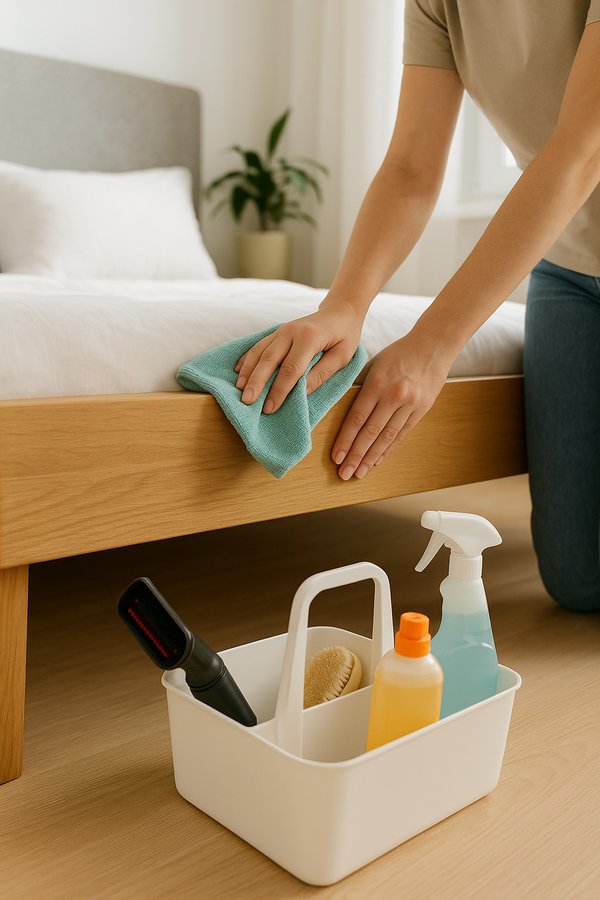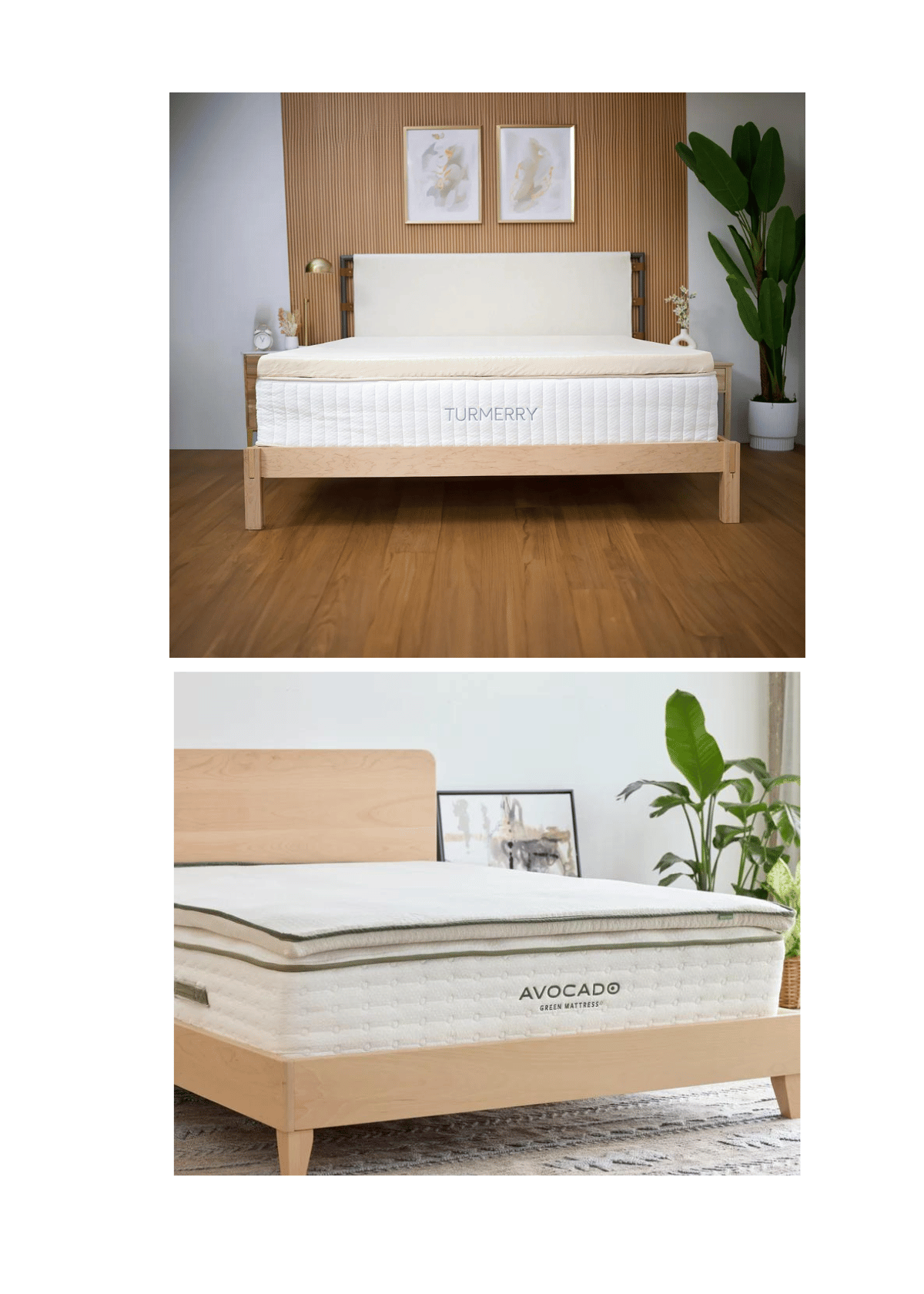(Last Update: 09/25/2025)
This content is created with integrity and impartiality; we do not receive direct compensation for this review. See our Mission and Core Values here.
Co-sleeping—where parents and babies share a sleep space—remains a hotly debated topic in parenting and medical circles.
While it offers closeness, bonding, and easier nighttime care, it also raises safety and developmental concerns.
Curious about the risks and rewards of co-sleeping?
This guide unpacks both sides of the conversation so you can better understand the science, cultural views, and expert recommendations—ultimately helping you make an informed decision that fits your family’s values, sleep needs, and safety priorities.
Is Co-sleeping Safe?

Co-sleeping is a common practice in many cultures, but it remains controversial due to concerns over infant sleep safety and known risk factors. Sharing the same surface with a sleeping adult can increase risks, especially if the adult has smoked or drunk alcohol.
Parents often wonder, is co sleeping safe for your baby? Experts emphasize that while co sleeping can strengthen family bonds and support responsive caregiving, it must be practiced carefully.
Risks such as sudden infant death syndrome (SIDS) and sleep related infant deaths are higher when infants share the same surface with adults.
On the one hand, proponents laud the potential benefits, such as facilitating easier breastfeeding, fostering a closer parent-child bond, and possibly aiding in regulating the baby's sleep cycles.
However, opponents caution against potential risks. The primary concerns revolve around the possibility of accidental death from suffocation or sudden unexpected infant Death Syndrome, especially in environments with soft bedding or where guardians might fall asleep and roll over onto the infant.
Recent research offers a nuanced perspective. Some studies suggest that bed-sharing does not elevate risks for the child when practiced safely.
Co-sleep safety largely depends on risk factors and the specific practices and environment set by the parents.
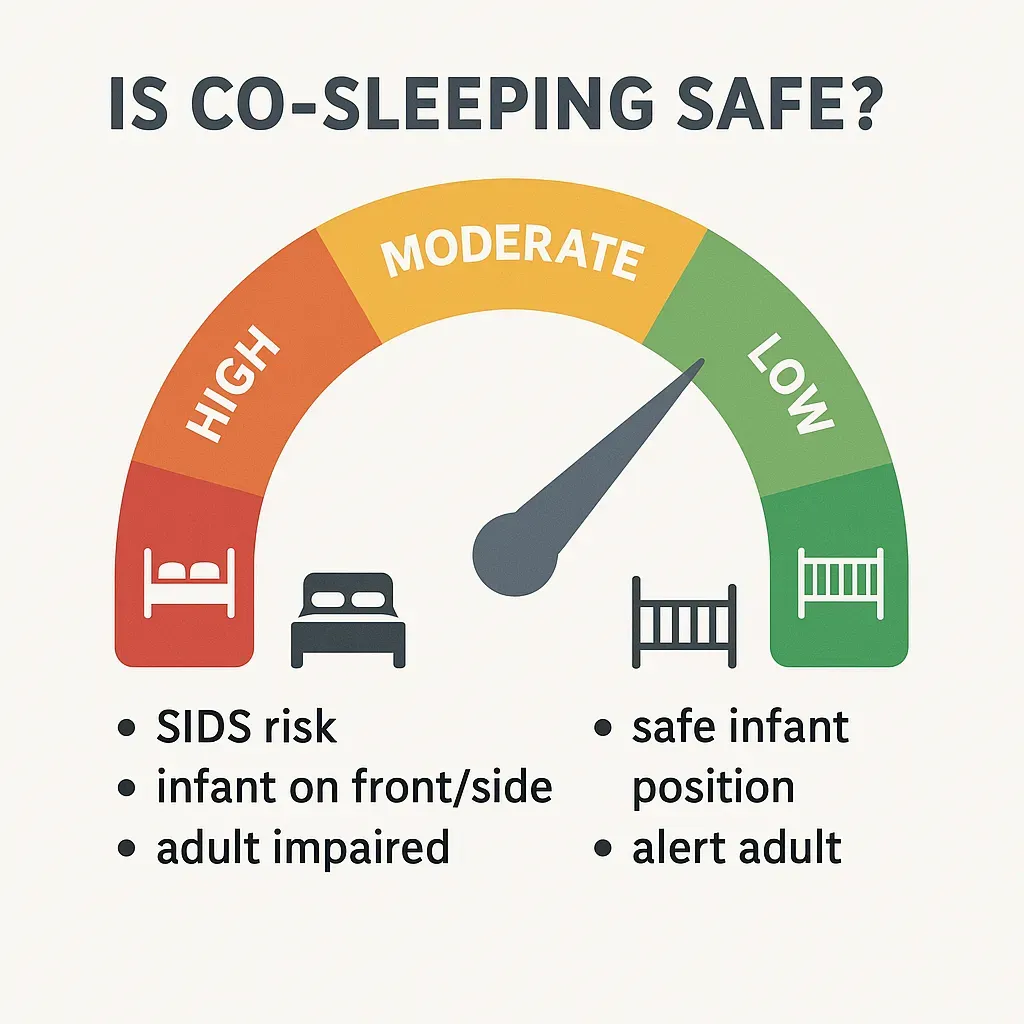
Infant Risks
Co-sleeping—where babies share the same sleeping surface as a parent—remains a topic of deep concern and debate among health care professionals.
While some parents find it promotes more sleep and bonding, studies including cross-sectional surveys and paediatric respiratory reviews point to heightened risks. Infant death associated with sofa sharing, sleeping with a drunk adult, or extremely tired caregivers is well documented.
The Centers for Disease Control and Prevention and public health experts promote separate sleeping arrangements as the safest option to reduce risks.
Safe sleep messages often emphasize placing the baby on a firm, flat mattress in a smoke-free room and ensuring the baby never sleeps on sofas or with other items nearby that could obstruct breathing.
The Controversies Surrounding Co-sleeping
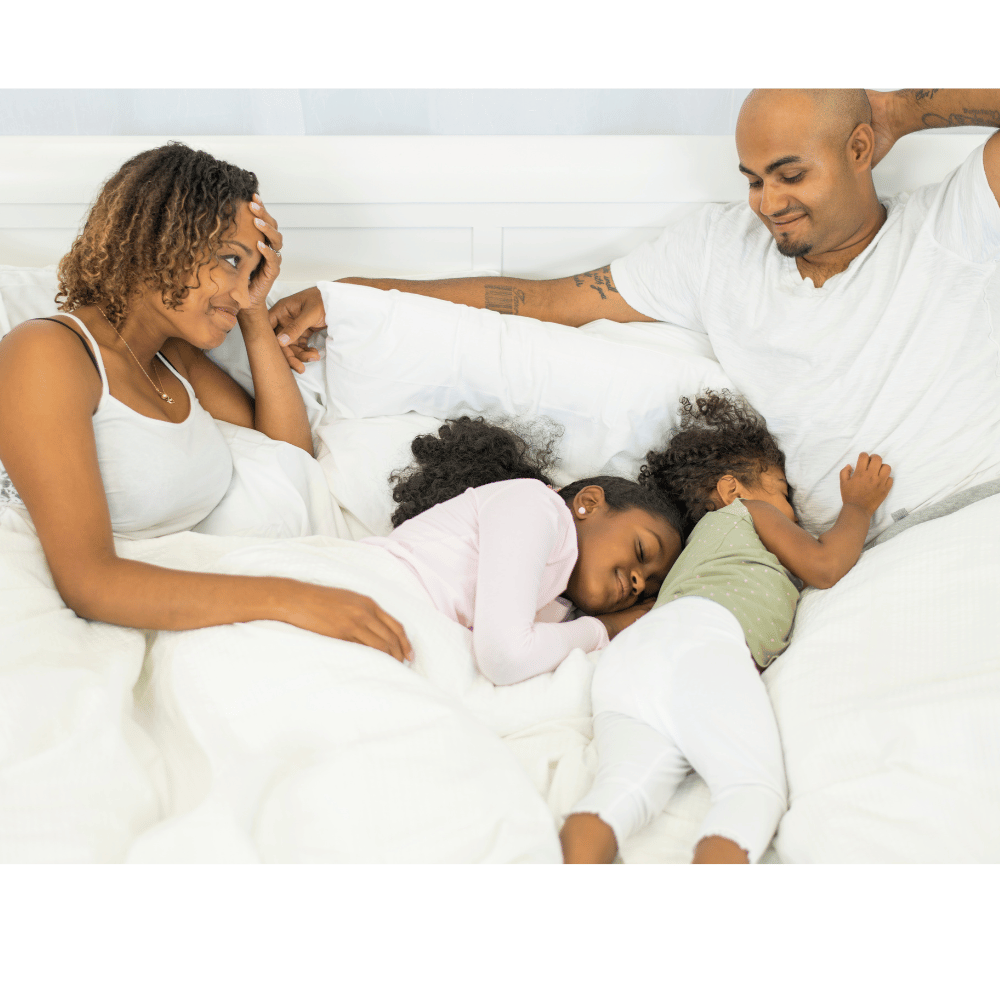
The topic of Parent-child sleep-sharing garners the attention of various health professionals. Critics point out potential risks, like an elevated risk of SIDS when sharing adult beds or when the baby sleeps on air mattresses.
However, proponents argue that co-sleeping can be safe with the right precautions, such as using a separate space and engaging in an honest conversation with medical professionals.
Common Misconceptions:
Safety Concerns Overblown:
- Some believe that risks associated with Sleep-related infant deaths. However, when not practiced safely, it can pose genuine hazards.
Impedes Independence:
- A common myth is that children who co-sleep will struggle with independence. Many parent-child sleep-sharing children grow up to be quite independent and secure.
Parental Needs:
- Detractors argue that co-sleeping might disrupt guardians' sleep or intimate time. This can be addressed by setting boundaries and designating specific nights for co-sleeping.
Dependency:
- While some worry that caregiver-child sleep-sharing fosters excessive dependency, research suggests that it can promote confidence and security in children instead.
Co-sleeping supports breastfeeding and maternal sleep by easing nighttime care, but it's controversial due to risks like suffocation, sleep problems, and lack of clear space needed for early human development.
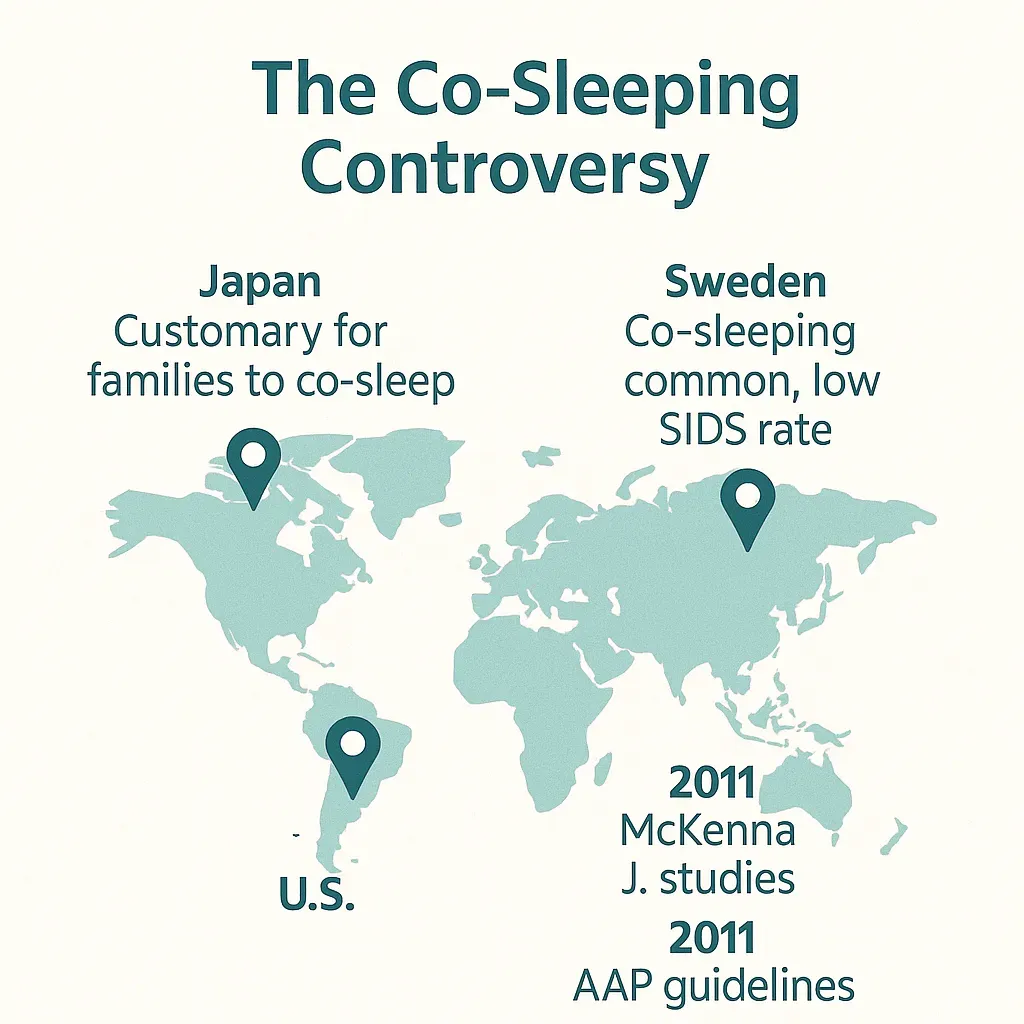
The Safety Risks of Co-Sleeping
While popular in many cultures, co-sleeping presents significant safety risks that every parent should be aware of. This section explores the potential dangers and how to mitigate them.
- Risk Factors Associated with Co-Sleeping
- Co-sleeping increases the risk of Sudden Infant Death Syndrome (SIDS) and other sleep-related deaths.
- Factors like soft bedding, pillows, and blankets can increase the likelihood of suffocation.
- Creating a Safe Sleeping Space
- To reduce the risk of suffocation, the baby’s sleeping area should be free of toys, loose blankets, and pillows.
- Avoid placing the baby on soft surfaces like air mattresses.
- Consumer Product Safety Commission Guidelines
- The Consumer Product Safety Commission (CPSC) doesn’t advise co-sleeping on sofas or armchairs.
- By adhering to the CPSC recommendations, you can significantly reduce potential hazards in your baby's sleeping environment.
Experts recommend placing babies in the same room but not the same bed. A firm, flat sleep surface like a bassinet or crib is ideal.
How to Co-Sleep Safely If You Choose to Do So
If parents choose to co-sleep, certain best practices can help lower risk:
- Sleep on a firm, flat mattress, not a sofa or cushioned surface
- Ensure the room is smoke-free and free from other substances (like alcohol or drugs)
- Breastfeeding mothers should avoid falling asleep in unsafe positions
- Keep blankets, pillows, and other items away from the infant
- Only co-sleep with a committed adult who understands the guidelines
- Avoid co-sleeping if the adult is extremely tired or has consumed alcohol
Learn how hypoallergenic materials can reduce risks for babies with sensitive skin or allergies in this detailed guide to safe sleep surfaces for sensitive sleepers.
The Evolution of Safe Co-sleeping Tools
The journey of parenting, filled with anxieties and aspirations, has always spurred innovation, especially in creating safer environments for infants.
Co-sleeper Bassinets:
Cribs are a modern twist on traditional sleeping arrangements. They provide a separate but attached space for the baby.
With safety barriers to prevent the baby from rolling into the family bed and vice-versa, these bassinets bring peace of mind to parents.
Arm's Reach Co-sleepers:
The 'Arm's Reach' concept is pioneering this movemenpt. Tailored for guardians who wish to maintain closeness without sharing the same sleep surface, these co-sleepers attach directly to the side of the parental bed.
Their distinct design serves a dual purpose: enabling easy access for nighttime feedings and comforting touches.
The evolution of parent-child sleep-sharing tools reflects a collective effort to address parents' desire for intimacy with their infants.
Balancing Comfort and Caution
Some parents feel comfortable sleeping with their baby because it promotes bonding and breastfeeding. While studies highlight benefits like more sleep and regulated breathing, safe guidelines should always be followed.
Understanding current research, including findings from longitudinal and cross-sectional studies, helps parents make informed choices about co-sleeping.
Support for the breastfeeding parent matters too—explore these top-rated pillows that ease back and neck strain during night feedings.
Benefits of a Co-sleeper Bassinet
A co-sleeper bassinet is a unique baby bed that allows parents and infants to sleep close to each other without sharing the same sleep surface. Strategically built for the baby's safety and parents' convenience, these bassinets have gained significant traction in recent years.
Benefits include:
Safety:
- Designed with firm mattresses and breathable sides, they reduce the risks associated with traditional bed-sharing.
Convenience:
- Being at arm's length allows for easy nighttime feedings and soothing without the need to leave the bed.
Bonding:
- Mother-infant sleep proximity fosters a sense of security and connection between the parent and baby.
Flexibility:
- Most portable models make transitions from room to room effortless.
Choosing the Right Bassinet:
Factors like stability, mattress firmness, and adjustability must be considered to ensure the bassinet aligns with the parental bed's height.
Safe Use:
Always adhere to the manufacturer's guidelines. Please ensure the bassinet is securely attached to the parent's bed, regularly check for wear or damage, and keep the bassinet free from loose bedding or toys.
A co-sleeper bassinet allows progenitors to sleep near their baby while maintaining a separate sleep space. This proximity facilitates easy monitoring for infants with low birth weight or other child health concerns.
Furthermore, it promotes a regulated sleep place, reducing the risk of SIDS. Being separate from adult bedding, it keeps baby sleep unaffected by factors like stuffed animals or soft surfaces, which could pose a risk.
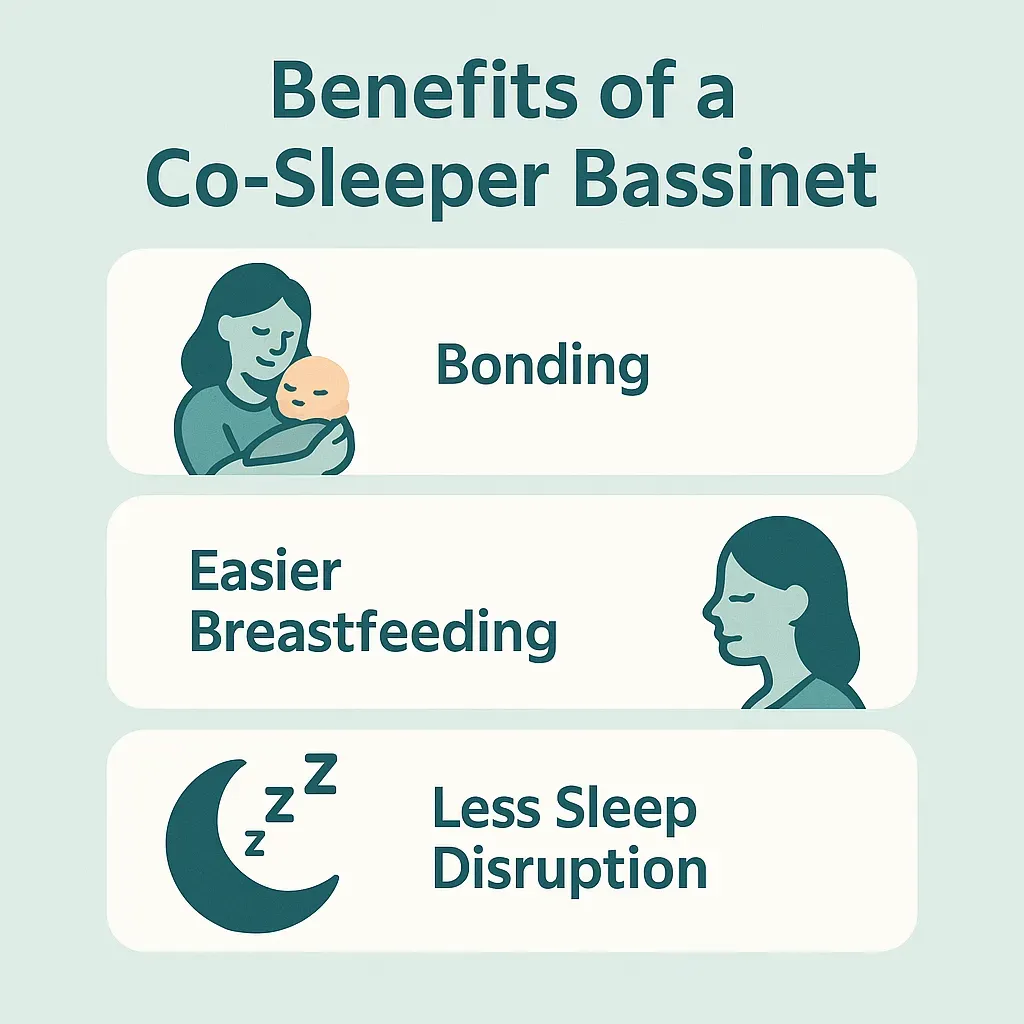
Cultural Perspectives and Parental Choices in Co-Sleeping
Cultural norms greatly influence co-sleeping practices, but parents must prioritize safety over tradition.
- Western Culture and Sleep Practices
- In Western cultures, solitary sleeping is strongly emphasized to foster independence.
- These practices align with safety guidelines that recommend separate infant sleeping spaces.
- Balancing Tradition with Safety
- While co-sleeping supports breastfeeding and bonding, it’s important to follow safety guidelines.
- Parents can reduce risks by choosing safer alternatives, like room-sharing without bed-sharing.
- The Role of Human Lactation in Sleep Choices
- Breastfeeding mothers may find night feedings easier with co-sleeping, but they must be aware of the risks.
- Consider using a bedside bassinet to balance convenience with safety during nighttime feedings.
Expert Opinions and Research on Co-Sleeping
Research and expert opinions play a crucial role in understanding the implications of co-sleeping.
- What Health Care Providers Say
- Most health care providers advocate for separate sleeping spaces to minimize risks.
- Consult your pediatrician for personalized advice on creating a safe sleep environment.
- Insights from Longitudinal Studies
- Studies published in the American Journal of Pediatrics show a correlation between bed-sharing and increased risk of SIDS.
- These studies emphasize the importance of safe sleep practices during the first year.
- The Importance of Proximity Without Risk
- Experts like Feldman Winter suggest that room-sharing without bed-sharing offers the benefits of proximity without the associated risks.
- Keep your baby close but always in their own safe sleeping space to reduce the risk of sleep-related deaths. The baby is born prematurely or has a low birth weight.
- Managing the Risks
- If you bed-share, ensure the sleep surface is firm, and remove all pillows and blankets.
- Consider using a co-sleeper attached to the bed as a safer alternative.
- Alternatives to Bed-Sharing
- Use a separate crib or bassinet in the same room to maintain proximity without the risks of bed-sharing.
- This approach allows parents to be close to the baby.
Optimal Sleep Environments: Best Practices for Your Baby
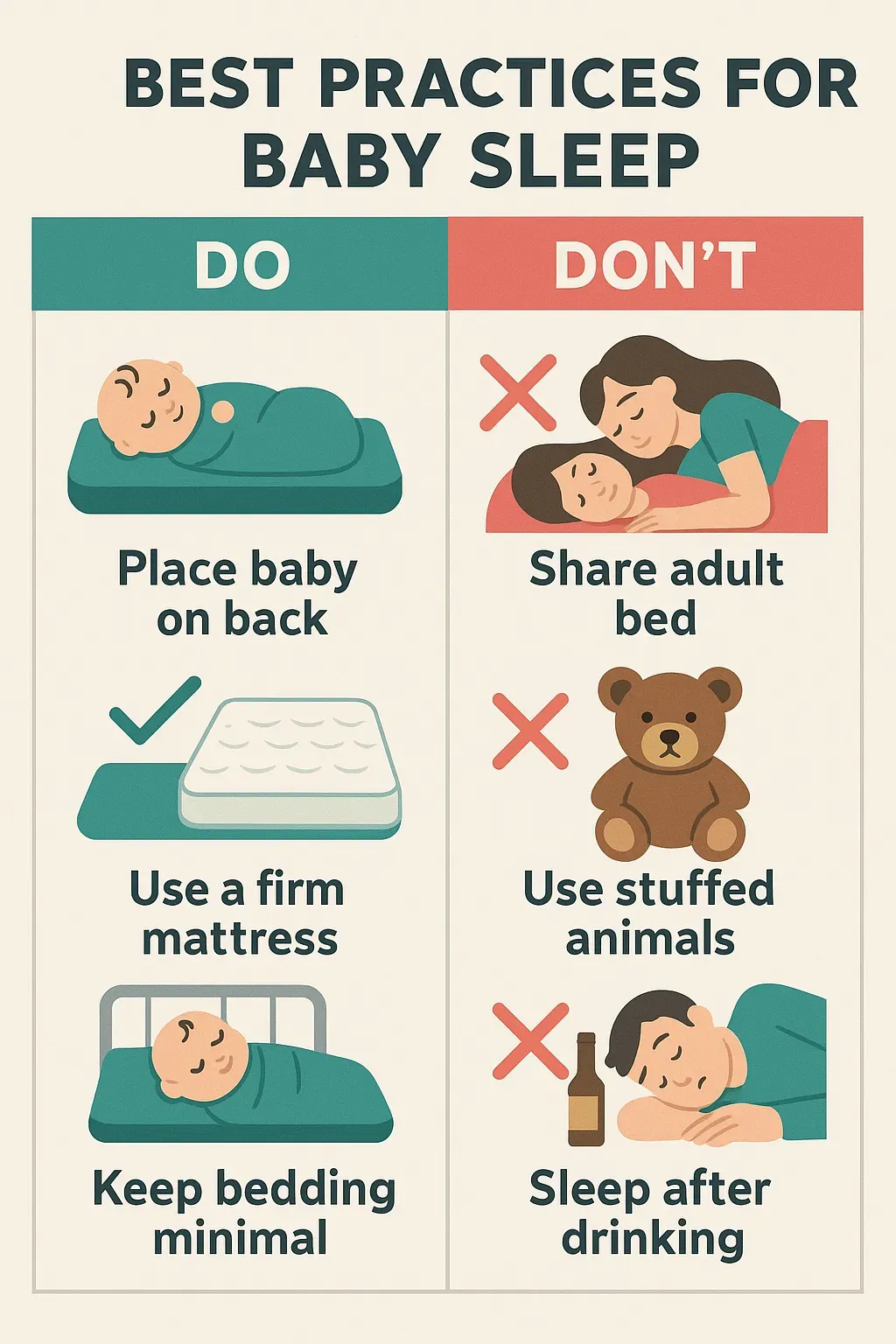
Creating a safe and optimal sleep environment for your baby is crucial for their well-being.
- Choosing the Right Sleeping Space
- Use a crib or bassinet that meets the best safety standards.
- Ensure the crib has a firm mattress and is free from fluffy bedding or toys.
- Importance of Sleep Position
- Always place your baby on their back to sleep. It is the safest position to reduce the risk of SIDS.
- Ensure the baby’s face remains uncovered and clear of any obstructions.
- Encouraging Independent Sleep
- Solitary sleeping in a crib fosters independence and reduces the risks associated with co-sleeping.
- Over time, this practice helps the baby develop healthy sleep habits.
Following infant care practices is essential. Keeping your baby in the same room but on a separate surface, like a bedside bassinet, helps reduce risk while still allowing closeness. A clear sleep space free of other items ensures your baby safe environment.
Co-Sleeping, Parental Choice, and Safe Alternatives
Some parents choose co-sleeping the same way they approach early human development—with an emphasis on close physical contact and responsive parenting. Still, alternatives like room sharing without bed sharing allow babies to sleep alone yet remain close.
According to systematic reviews, consistent education improves parent uptake of safe practices, ultimately supporting infant care without compromising public health goals.
The Arm's Reach Co-sleeper
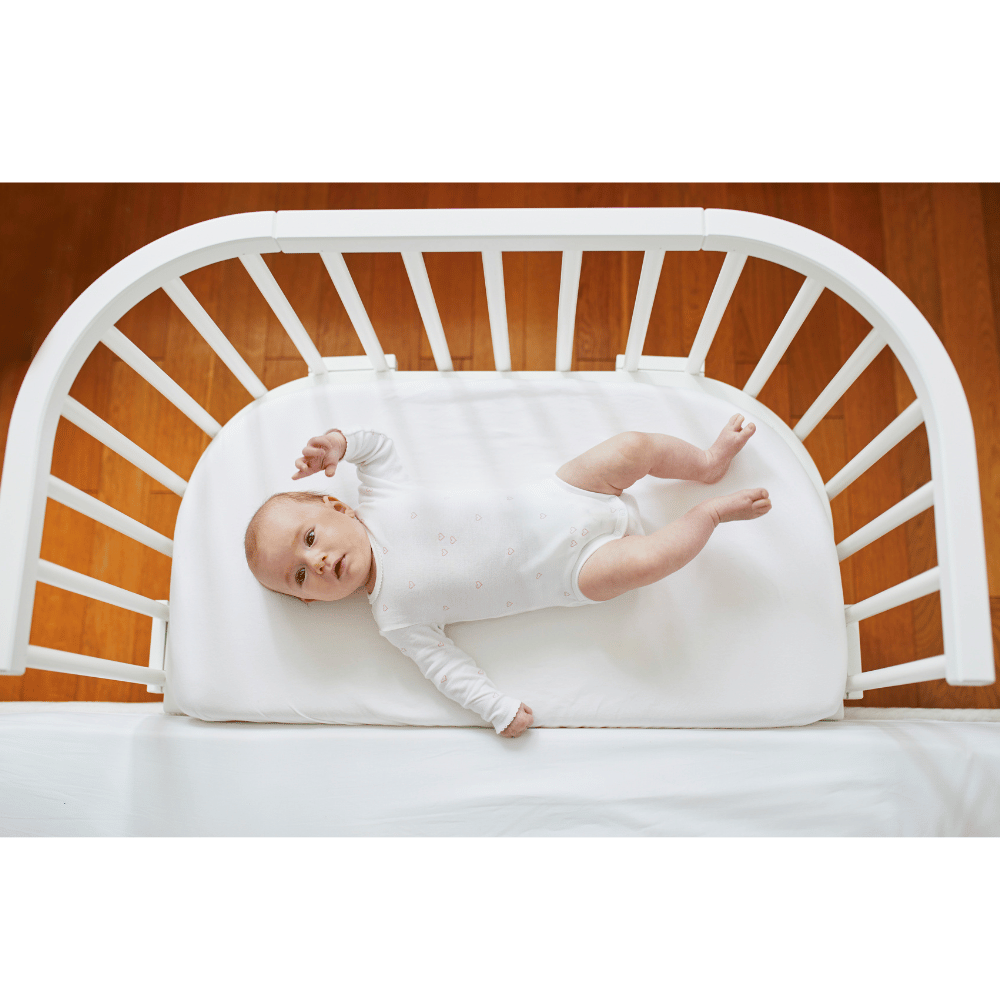
The Arm's Reach Co-sleeper stands out for its unique design. It enables progenitors to keep their infants sleep within arm's length but on a separate mattress.
This ensures the baby's head is safe from hazards like adult beds or crib bumpers. As the name suggests, the baby is always within reach, but the separation reduces elevated risk factors.
Design and Safety Features:
Sturdy Framework:
- Its robust design ensures stability.
Mesh Sides:
- Provide optimal ventilation, reducing overheating risks.
Adjustable Height:
- Enables alignment with varying bed heights, ensuring a snug fit against the parental bed.
- No risk of death: Bed-sharing increases the risk of sleep-related deaths.
Research shows increased breastfeeding, lower stress hormones, and more sleep for both mother and child when done correctly. Choosing safe infant sleep setups allows families to enjoy a good night’s sleep while supporting healthy infant development.
Why It Stands Out:
Unlike conventional bassinets, the Arm's Reach Co-sleeper focuses on the symbiosis of safety and accessibility. The ease with which guardians can attend to their sleeping baby during nighttime without unnecessary movement sets it apart.
Benefits:
Enhanced Bonding:
- Facilitates easy comforting and feeding, strengthening the caregiver-child bond.
Safety:
- Minimizes risks associated with traditional bed-sharing.
Convenience:
- Allows guardians to respond promptly to their baby's needs.
How to Safely Co-sleep: A Babies Sleep Step-by-step Guide
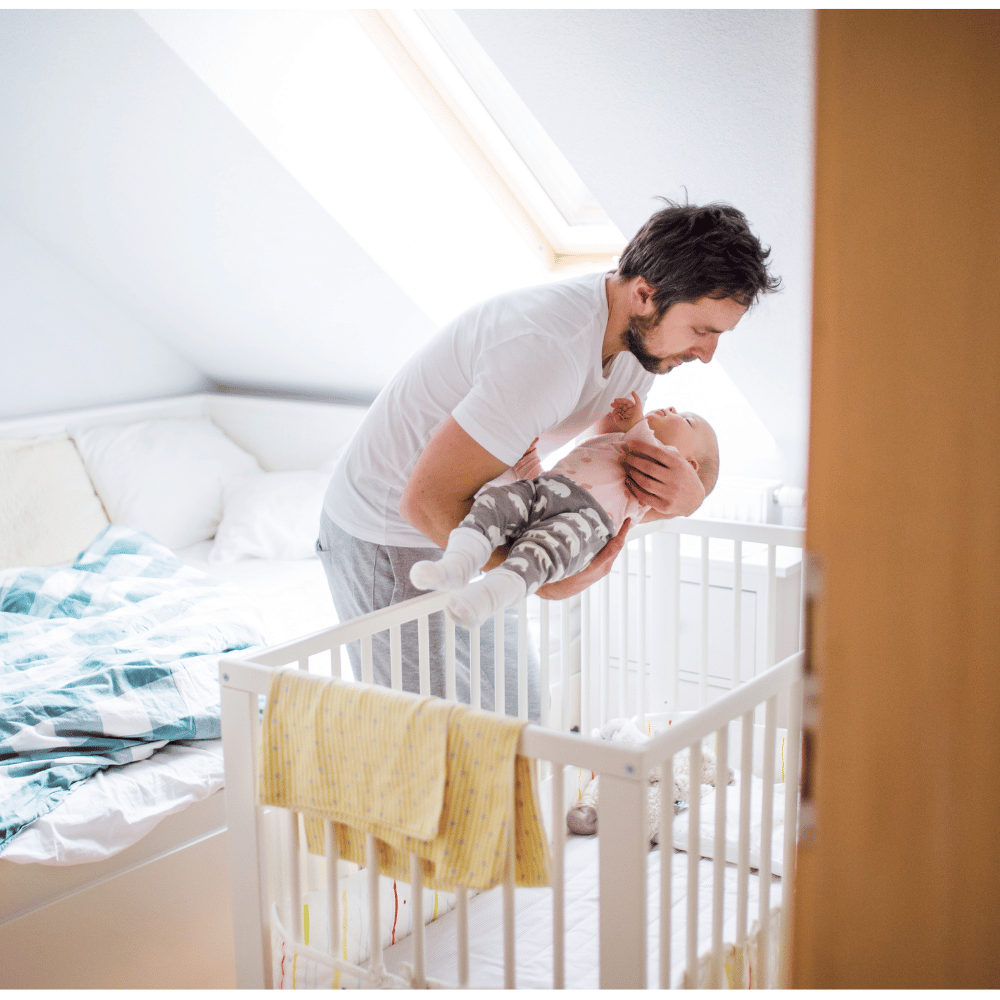
The risk of SIDS concerns many parents, especially when sleeping.
Ensuring child health is paramount for babies with low birth weight, especially co-sleeping babies who require extra care, proper sleep surfaces, and safe sleeping environments to promote healthy development and reduce risks.
Infants must sleep safely, separate from other children.
- Preparing Your Bed:
Firm Surface:
- Opt for a firm bed, which minimizes the risk of the baby sinking.
Avoid Gaps:
- Ensure there are no spaces between the mattress and the headboard or wall, which can pose entrapment hazards.
Declutter:
- Remove pillows, plush toys, and thick blankets, reducing suffocation risks.
Choosing the Right Co-sleeping Products:
- Safety First:
Opt for products with safety certifications and positive user reviews.
- Size Matters:
Could you ensure the chosen product, whether a co-sleeper bassinet, aligns with your adult bed size and height?
Pediatric respiratory reviews emphasize disease control measures in sleep-sleeping to support infants' physical and mental health.
Navigating Co-Sleeping and Bed-Sharing Safely
While co-sleeping and bed-sharing are common practices, they require careful consideration to ensure the baby's safety.
- Understanding Bed-Sharing Recommendations
- Some health professionals recommend bed-sharing for specific situations.
- Bed-sharing should be avoided for these conditions.
- Creating a Safe Sleeping Space:
- Temperature:
Keep the room comfortably cool; overheating can be dangerous.
- Ventilation:
Please ensure good airflow, especially using a co-sleeper with mesh sides.
Preventing overheating is crucial in any shared sleep space—see the best cooling mattress toppers that promote safer infant sleep.
- Accessibility:
Make sure you can easily reach the baby without obstacles.
Falling asleep securely is crucial in reducing infant deaths while sleeping with your baby.
- Establishing Safe Bed-Sharing Practices:
- Healthy Adults: Only sober, non-smoking adults should co-sleep with babies.
- Routine: Establish a consistent bedtime routine.
Best Practices for Co-sleeping Safety with No Risk for Sudden Infant Death Syndrome (SIDS)
For families choosing to co-sleep, ensuring the baby's safety remains paramount. Education can decrease sleep-related infant deaths in co-sleeping.
- THE IMPORTANCE OF A FIRM MATTRESS:
A firm bed is essential when bed-sharing. Soft or sagging mattresses can create pockets or indentations. A firm surface ensures that the baby remains stable throughout the night.
- AVOIDING PILLOWS ND BLANKETS NEAR THE BABY:
These items might seem harmless, but they can pose a significant suffocation risk for infants. Babies don't have the reflexes or strength to move away if a pillow or blanket obstructs their breathing.
- OPTIMAL BABY POSITIONING:
Always lay the baby on their back to sleep. This position has significantly reduced the risk of Sudden Infant Death Syndrome.
- AVOID OVERHEATING:
Ensure the room is comfortable and avoid overdressing the baby. Overheating has been linked to increased SIDS risk.
Monitoring how your infant sleeps can provide insights into their overall health. Ensuring your baby's sleep is safe revolves around understanding infant physiology and creating an ideal sleep environment.
Task forces and health professionals consistently warn against soft surfaces and adult bedding. Older children should have their separate rooms or bedding to prevent any mishaps.
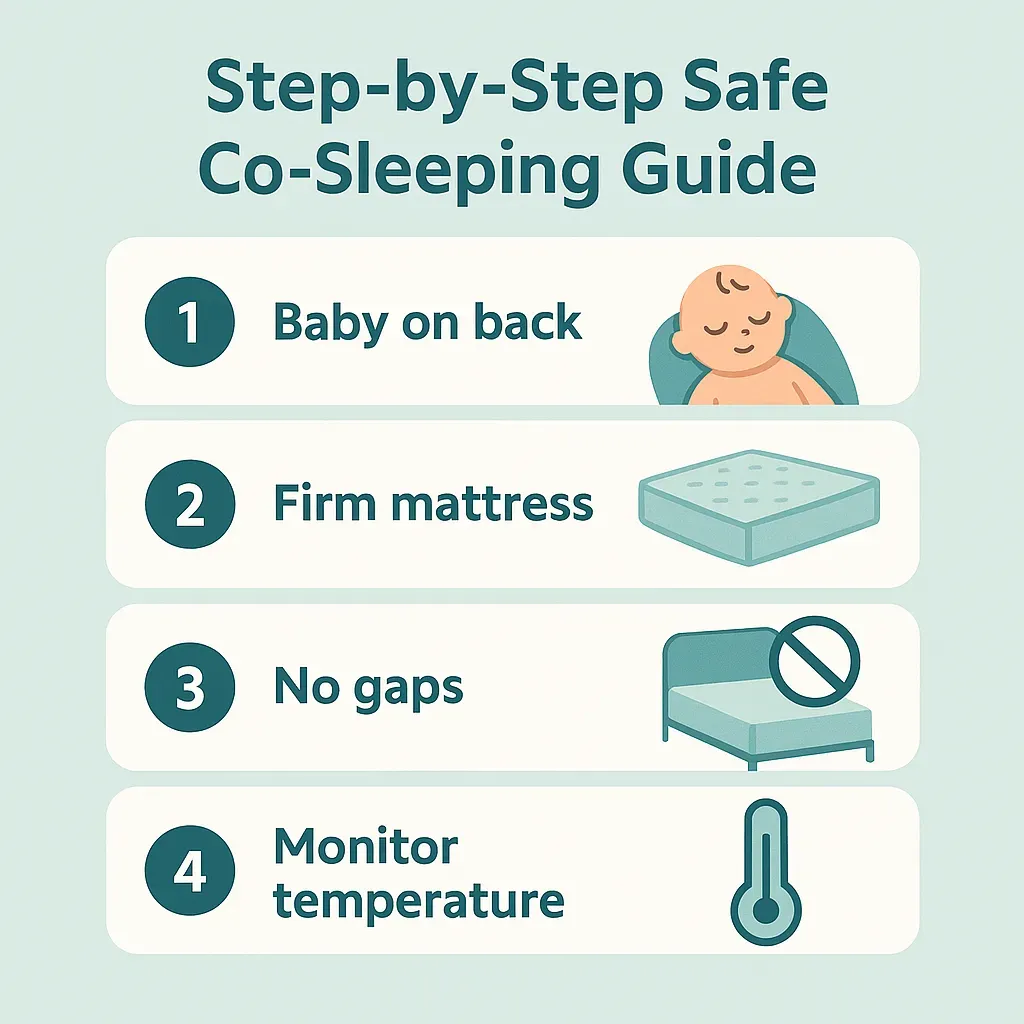
How to Determine if Co-Sleeping is Appropriate for Your Family?
- Consult with your pediatrician about the risks and benefits of co-sleeping for your specific situation, including your baby's health factors and age.
- Assess all adults who would be sharing the sleep space - neither should smoke, use alcohol, be extremely obese, or take medications that cause drowsiness.
- Evaluate your sleep habits and patterns - light sleepers who are aware of their baby's presence may be better suited for co-sleeping than heavy sleepers.
- Consider your bedroom setup and whether it can be modified to meet safety guidelines (firm mattress, minimal bedding, no gaps or crevices).
- Discuss co-sleeping with all caregivers to ensure everyone agrees on the approach and understands the safety protocols.
- Try room-sharing (baby in a separate crib or bassinet in your room) first to see if this meets your needs for nighttime parenting and bonding.
- Reassess your decision regularly as your baby grows and develops, as co-sleeping arrangements may need to change over time.
How to Create a Safe Co-Sleeping Environment for Your Baby?
- Use a firm mattress with tight-fitting sheets - avoid waterbeds, soft mattresses, memory foam, or pillow-tops that can increase suffocation risks.
- Remove all unnecessary bedding including pillows, comforters, duvets, and decorative items from the sleep area where the baby will be.
- Position the bed away from walls to prevent entrapment and ensure there are no gaps between the mattress and headboard or footboard.
- Keep the baby on their back at all times during sleep, never on their stomach or side.
- Dress your baby appropriately for room temperature (typically one layer more than adults) to avoid overheating, and don't cover them with adult blankets.
- Install bed rails if your mattress is raised off the floor, or place the mattress directly on the floor to prevent falls.
- Ensure long hair is tied back and remove any jewelry, clothing with strings, or other items that could cause entanglement.
How to Implement Room-Sharing as a Safer Alternative to Bed-Sharing?
- Select an appropriate bassinet, crib, or co-sleeper that meets current safety standards and place it within arm's reach of your bed.
- Ensure the baby's sleep surface is firm with a tight-fitting sheet and contains no pillows, blankets, bumpers, or stuffed animals.
- Position the baby's separate sleep space to allow easy visibility and access for nighttime feedings and comfort, but without dangerous gaps between your bed and baby's sleep space.
- Maintain an appropriate room temperature (68-72°F/20-22°C) and dress your baby according to the room conditions rather than using loose blankets.
- Establish a consistent bedtime routine that helps your baby recognize when it's time to sleep in their own space.
- When nursing during the night, return your baby to their separate sleep space once feeding is complete rather than falling asleep with them in your bed.
- Continue room-sharing ideally until the baby is at least 6 months old, with the American Academy of Pediatrics recommending it for the first year when SIDS risk is highest.
Firmness and surface stability are key in co-sleeping—this list highlights the top Tempur-Pedic mattress toppers for comfort and safety.
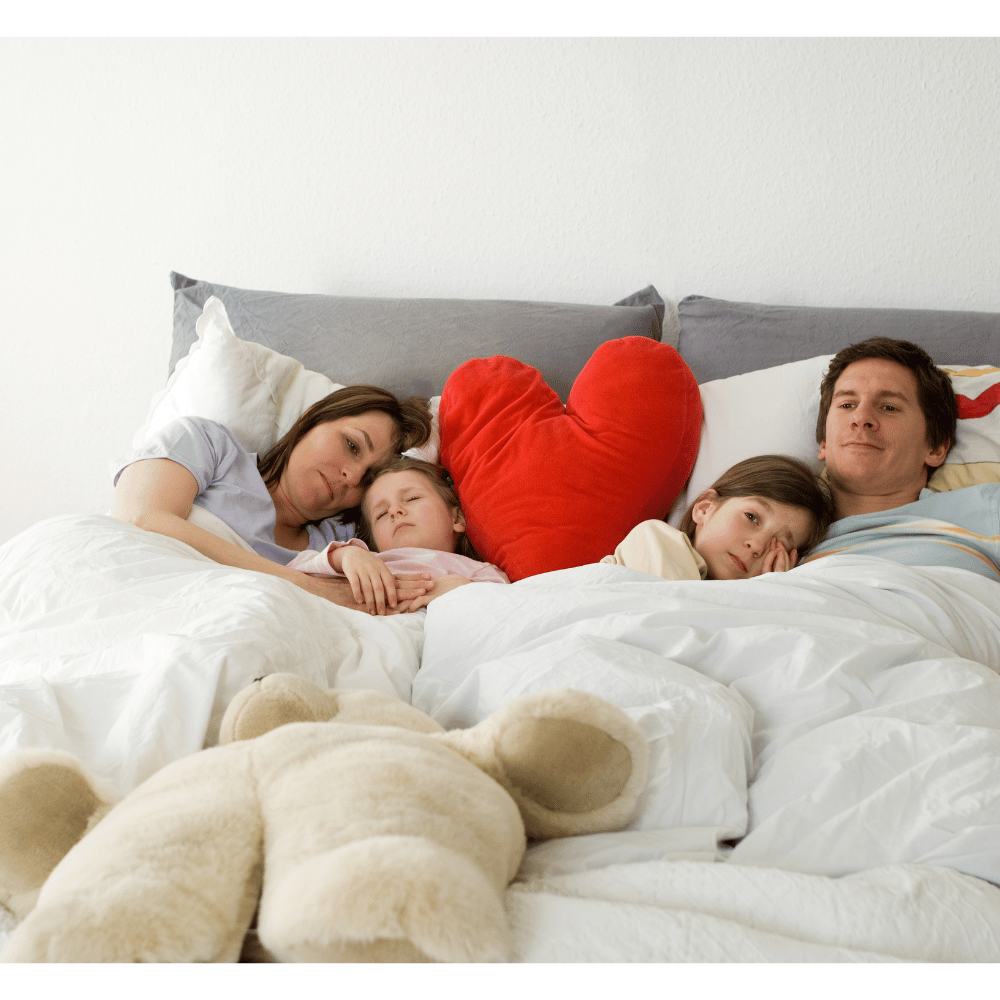
Conclusion
While cherished for its closeness, co-sleeping undeniably comes with concerns and considerations.
The significance of safety can't be stressed enough; it serves as the backbone of any co-sleeping arrangement.
From the type of mattress used to the baby's positioning, every detail plays a role in ensuring a secure environment.
However, beyond the safe sleep guidelines and debates, choosing to align with your family's comfort and needs is crucial.
Each family is unique, and what works for one might not for another.
Prioritize safety, trust your instincts, and chart a path that best suits your family's journey.
FAQs
At what age should you stop co-sleeping?
Most experts recommend transitioning away from co-sleeping by 12 months to promote independent sleep habits and reduce safety risks. However, the ideal age can vary based on cultural norms, family preferences, and the child's developmental needs. Always prioritize safe sleep practices.
What is co-sleeping, and why is it not recommended?
Co-sleeping involves a parent and infant sleeping in close proximity, often in the same bed. It’s not recommended by many health organizations due to increased risks of suffocation, strangulation, and Sudden Infant Death Syndrome (SIDS), especially in unsafe sleep environments or with impaired adults.
What is the difference between co-sleeping and bed-sharing?
Co-sleeping refers broadly to a child sleeping near a caregiver, such as in the same room. Bed-sharing is a specific type of co-sleeping where the child shares the same sleeping surface. Bed-sharing carries higher safety risks compared to room-sharing with a separate sleep surface.
What do pediatricians say about co-sleeping?
Pediatricians, especially those aligned with the American Academy of Pediatrics, advise against bed-sharing due to safety concerns. They recommend room-sharing instead—keeping the baby in the same room but on a separate, firm sleep surface to reduce the risk of SIDS and sleep-related deaths.



